Windows 10 supports several file systems out-of-the-box. Some of them are legacy and exist mostly for backward compatibility, others are modern and not widely used. This article explains different methods you can use to find which file system your drives are formatted with.
Advertisеment
A file system is a special way to store and organize your information on different storage media, including hard drives, solid state drives, USB sticks, and other devices. It allows storing, modifying and reading files and folders to applications and the operating system installed on your computer.
When you format your internal disk drive or a flash drive, you prepare it for use as a storage media by your operating system. During this process, the file system is created. All information stored on the drive or partition will be removed.
Windows 10 supports FAT, FAT32, exFAT, NTFS, and ReFS file systems without using extra software.
They have different features and properties. For instance, FAT and FAT32 are legacy file systems. FAT supports a maximum volume size of 4 GB, FAT32 supports 32 GB. FAT file systems also have limitations on maximum file size. NTFS is the only file system which supports file compression and encryption and has advanced features.
There are a number of methods you can use to find the file system used on your drives. Here is how.
To find File System of a drive in Windows 10, do the following.
- Open File Explorer and go to the This PC folder.
- Right-click on the drive and select Properties in the context menu.
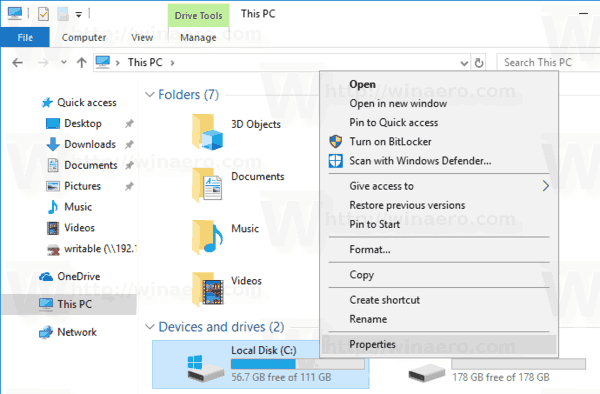
- In Properties, you will see the file system of the drive on the General tab.
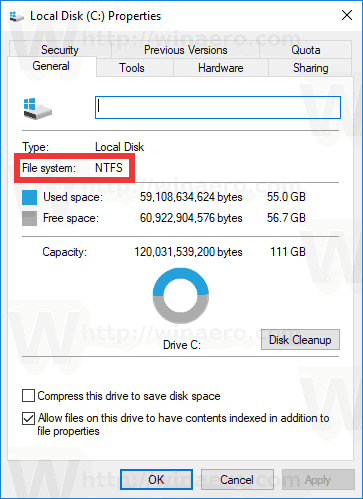
This method is the easiest and the fastest.
Alternatively, you can use the Diskpart tool, Disk Management, or PowerShell.
Find File System of a drive with Diskpart
- Press Win + R keys.
- In the Run box, type diskpart and press the enter key.
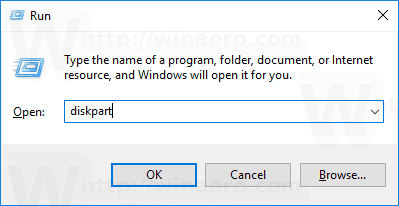
- In Diskpart, type the command
list volume.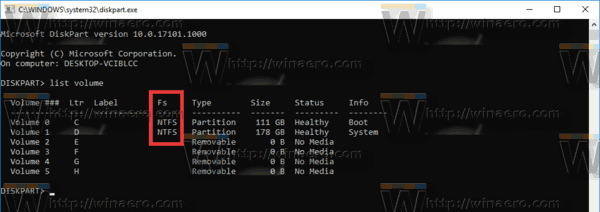
- In the output, you will find the file system for each drive connected to your computer.
Diskpart works also in Windows Preinstallation Environment, so you can use it during various maintenance tasks.
Find File System of a drive with Disk Management
- Press Win + X keys together or right-click the Start button.
- In the Win+X menu, select Disk Management
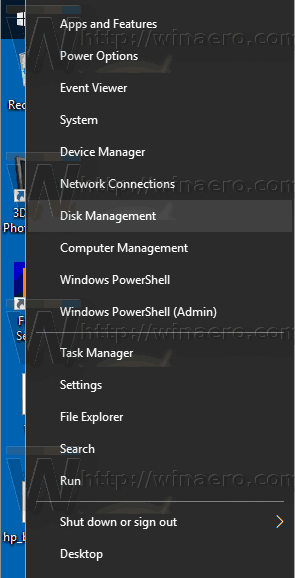
- See values in the File System column.
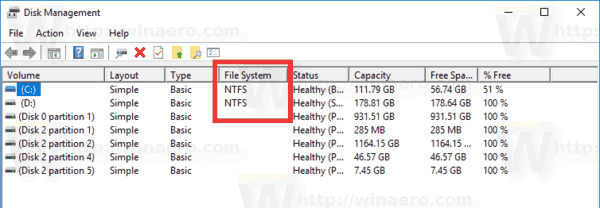
Finally, there is a method to determine the file system for each drive connected to your computer using the PowerShell scripting language.
Find File System of a drive with PowerShell
- Open PowerShell as administrator.
- Type
get-volumeand press the Enter key. - In the output, see values in the FileSystemType column.

As you can see, it is very easy to determine the file system for your drives. You can use any method you like.
That's it.
Support us
Winaero greatly relies on your support. You can help the site keep bringing you interesting and useful content and software by using these options:

Sergey: Great job! I look forward to viewing your Winaero posts everyday.
In your example of File System of a drive with Disk Management, Disk O, Partition 1 and Disk 2, Partitions 1,2,4,& 5 indicate 100% FREE . Does that mean there is nothing on these partitions and can they therefore be eliminated? If so, how? Thanks, Gary
I have Linux on those partitions. Windows cannot recognize them properly.
Another options is via the commandline utility (cmd.exe), then enter the command:
fsutil fsinfo volumeInfo
For example, on an USB drive:
C:\>fsutil fsinfo volumeinfo f:
Volume Name : Corsair
Volume Serial Number : 0x627f3e57
Max Component Length : 255
File System Name : exFAT
Is ReadWrite
Preserves Case of filenames
Supports Unicode in filenames
Returns Handle Close Result Information
Supports Encrypted File System
Thanks for sharing!